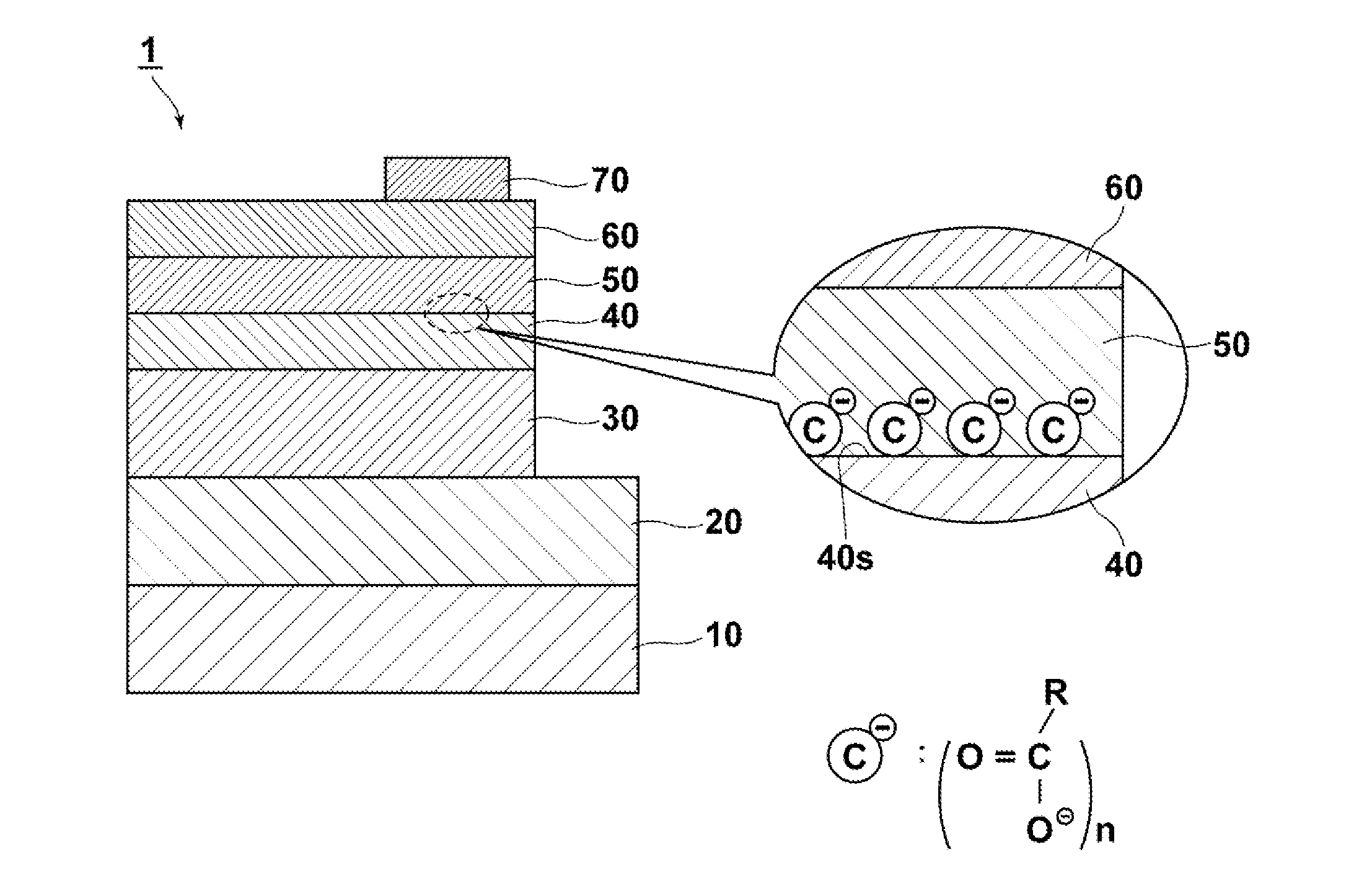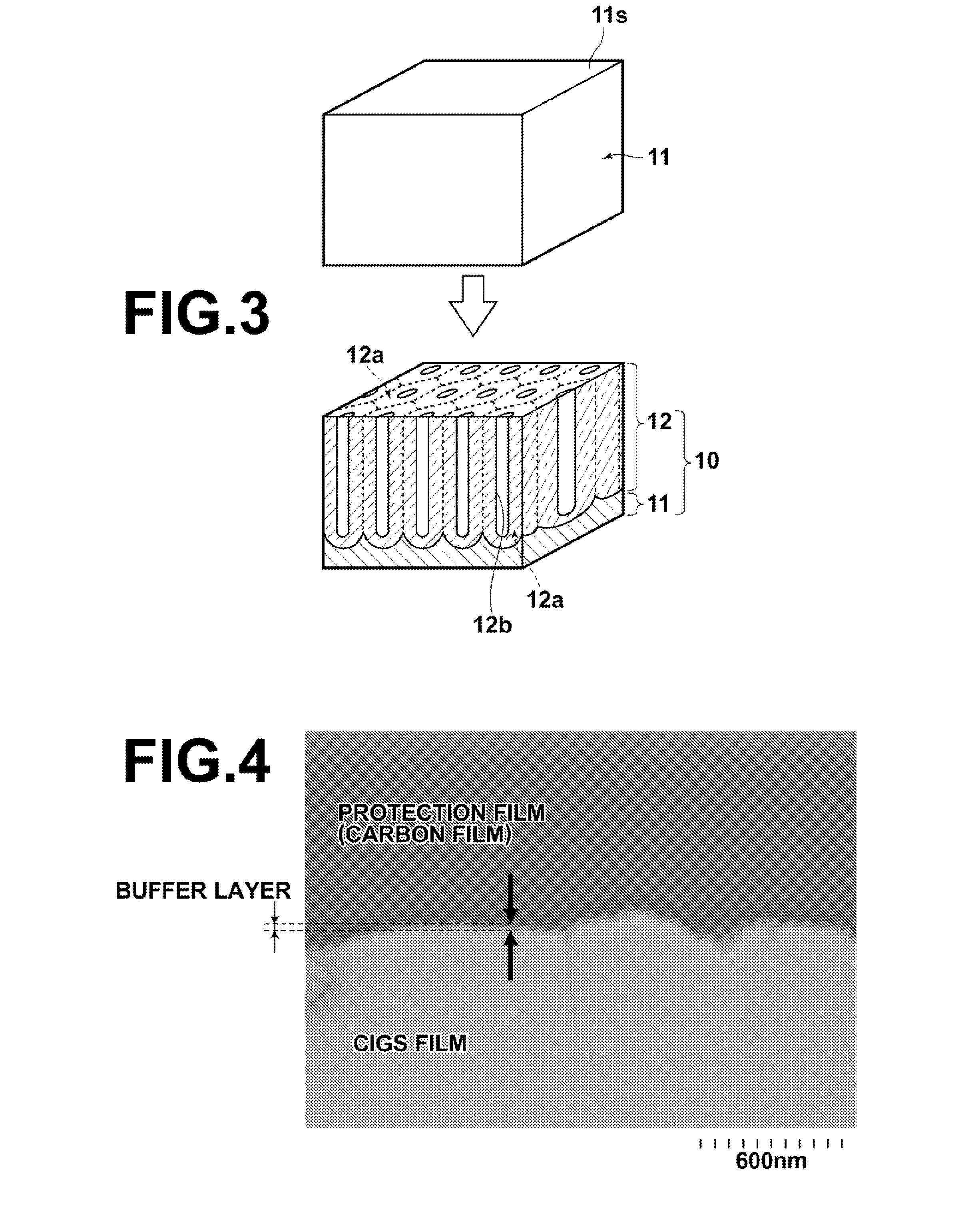Photoelectric conversion device and solar cell having the same
a conversion device and solar cell technology, applied in the direction of solid-state devices, semiconductor devices, electrical devices, etc., can solve the problems of degradation of photoelectric conversion efficiency, difficult formation of buffer layers on ci(g)s, uneven surface, etc., to achieve high photoelectric conversion efficiency, increase the uniformity of buffer layers, and improve the effect of compactness
- Summary
- Abstract
- Description
- Claims
- Application Information
AI Technical Summary
Benefits of technology
Problems solved by technology
Method used
Image
Examples
examples
[0107]Examples and Comparative Examples of the present invention will now be described. As Examples 1 to 7 and Comparative Examples 1 to 6, buffer layers were formed using different combinations of substrate, reaction solution used for forming buffer layers by CBD process, and CBD reaction condition, and the buffer layers so formed were evaluated. Hereinafter, substrates, preparation method of CBD reaction solutions, and reaction conditions used for Examples and Comparative Examples will be described first followed by the evaluation methods and results.
[0108]As for substrates, two types of substrates were provided.
[0109](1) Cu(In0.7Ga0.3)Se2 / Mo / SLG / AAO / Al / SUS substrate: substrate that uses an anodized substrate (30 mm×30 mm) made of a composite base of a 100 μm thick stainless steel (SUS) and a 30 μm thick Al with an anodized aluminum film (AAO) formed on the surface of the Al, and a soda lime glass (SLG) layer, a Mo electrode layer, and a CIGS layer are further formed on the surfac...
PUM
 Login to View More
Login to View More Abstract
Description
Claims
Application Information
 Login to View More
Login to View More - R&D
- Intellectual Property
- Life Sciences
- Materials
- Tech Scout
- Unparalleled Data Quality
- Higher Quality Content
- 60% Fewer Hallucinations
Browse by: Latest US Patents, China's latest patents, Technical Efficacy Thesaurus, Application Domain, Technology Topic, Popular Technical Reports.
© 2025 PatSnap. All rights reserved.Legal|Privacy policy|Modern Slavery Act Transparency Statement|Sitemap|About US| Contact US: help@patsnap.com



